The WHYs and the HOWs of Digital Strategy for nonprofits
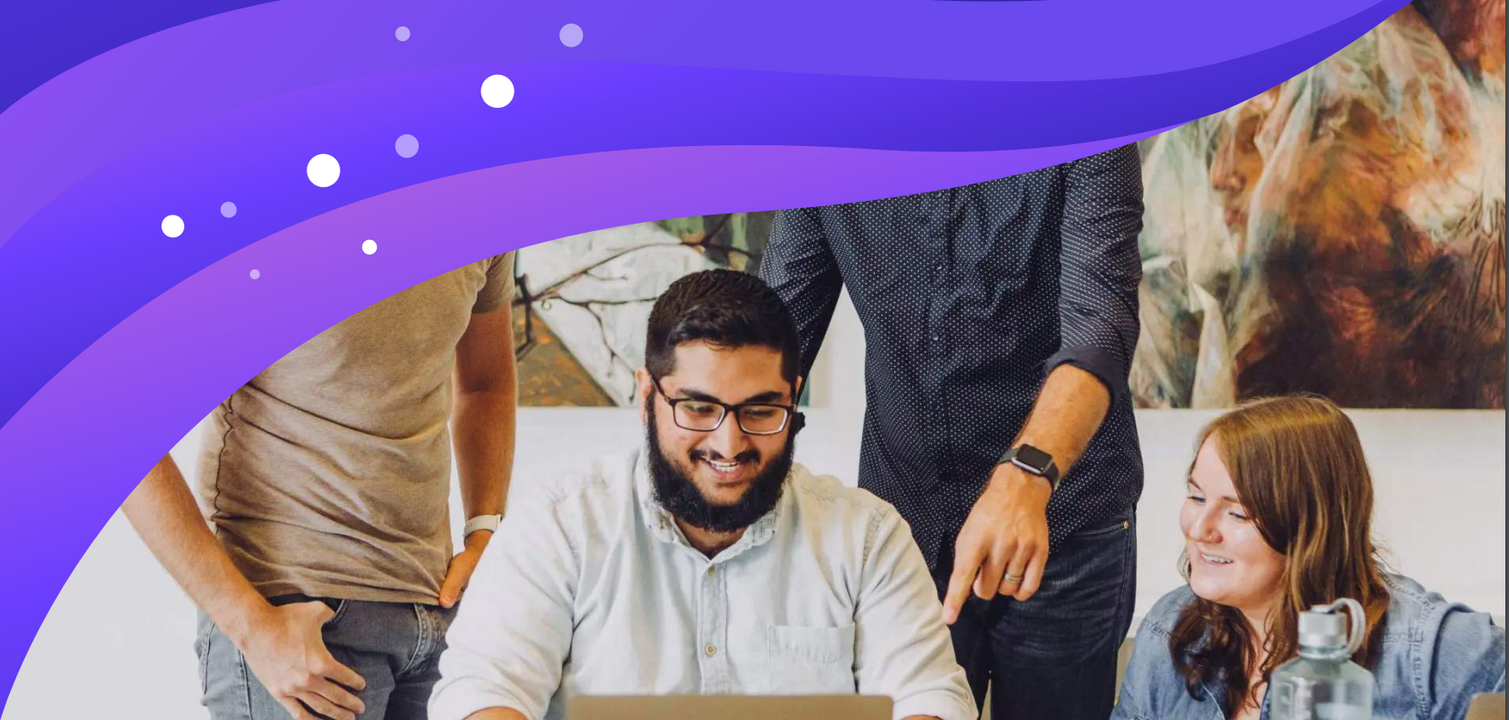
As the world becomes more digitally-focused, it’s essential for nonprofits to have a digital presence. With more and more options for online engagement, we know that this can be challenging for nonprofits to tackle. But, we also know that it is a huge opportunity to increase audience engagement, awareness and fundraising. To help nonprofits navigate this, we’re going to explore the “whys” and “hows” of creating a nonprofit digital strategy. We’re even providing a free digital strategy canvas to help nonprofits improve their online presence in just a few steps.
Although the barriers to entry seem low - signing up for a TikTok account isn’t difficult - it’s harder to really make use of the opportunity if there isn’t a strategy in place. Without this, managing social accounts can feel like a chore with little reward. A digital strategy is an overarching plan that helps nonprofits cut through the noise, capture people’s hearts and minds, and maximise engagement. In simple terms, it’s a focused plan to help organisations meet their fundraising and engagement goals, utilising digital channels.
Why do nonprofits need a digital strategy?
Up to 85% of organisations who join our BRIDGE programme consider a lack of digital strategy to be a major challenge that they have to overcome in order to achieve their goals.² Nearly half of participating organisations don’t have a digital strategy in place when they start* and their confidence in digital strategy averages out at only 2.7/5.* It’s vital that organisations have a digital strategy in place to help them maximise return on any effort they put into online engagement and digital tools.
There are many potential benefits of having a digital presence, we see corporations making good use to drive their revenues all the time. Online engagement can also support all types of nonprofits, across geographies and cause areas, to further their missions and achieve their goals.
Support the mission
Whatever the cause area, geography, or mission of a nonprofit organisation, a robust digital strategy supports progress towards the overarching vision, mission, and goals.
By setting up a digital strategy, nonprofits are able to measure what impact digital is having on their overall progress towards their organisational objectives. Digital is generally easier to monitor and measure than many other comms streams so it has the added bonus of helping organisations to understand and articulate the reach and impact of their communications. This is often a requirement of funders and grantmakers.
Maximising reach and engagement
Having a digital strategy allows an organisation to be smarter with the use of their digital channels. Instead of creating content with no clear objectives (because they know they should be online), they can make the most of each channel by setting objectives and measurable targets on a regular basis. This structure enables them to measure return on investment and adapt and change their tactics for maximum reach and engagement with their target audiences.
“To have a more structured process with our digital communications will help us save time. Now we need to allocate time to sit down as a team.” (EcoWEB)
Connect with existing supporters, donors, volunteers
A digital strategy allows nonprofits to connect with their existing stakeholders in meaningful ways, and efficiently. By mapping out the different audiences they want to reach (social media followers, donors/potential donors, volunteers, etc) they are able to create content that speaks to them. This is also about meeting a community where they are and helping them get the information they want and need in the ways that suit them.
Reach new audiences
A large proportion of the world is online and is used to engaging with service providers, friends, businesses and the government online. Nonprofits looking to reach new audiences (whether for raising awareness or funds) can tap into this huge pool of people if they think about how to do so strategically.
“Getting the name of the company out there and increasing the awareness of our work are all very much the direction I want to take us in, it is really good for us to now have that knowledge of how digital can help us do that.” - Blue Masque Theatre
Focussing on what matters the most to them (e.g increasing awareness of their cause area in the youth population in Kinshasa) they can map out the tactics and channels most likely to help them towards this.
An organised digital strategy can help nonprofits explore different channels or messaging to appeal to a new audience - whether it’s a specific campaign or a long-term tactic.
Drive donations
For organisations where fundraising is a key part of their operation, the digital strategy can strengthen and support this. Those new audiences that are reachable online? Well, they are all potential donors. By making potential donors a key target audience of the digital strategy, it is easy to align digital activities with fundraising goals - from driving donations to reconnecting with lapsed donors.
Moreover, a digital strategy can help nonprofits diversify their income streams by experimenting with different digital channels to boost their fundraising activities. This is a key route to resilience, allowing organisations to have multiple different income streams, so when one is affected by external factors, they still have others they can rely on.
*based on new cohorts starting between August and November 2022
²based on 2 cohorts starting between August and November 2022
So why doesn’t every nonprofit already have a digital strategy?
There are many things that prevent nonprofits from creating a digital strategy. When we talk to the organisations we work with about this, the three most common reasons are: lack of time, lack of expertise, or fear of embracing something new (with potential internal obstacles).
Lack of time
Nonprofits are often under-resourced, and their teams have a never-ending to-do list. This makes it difficult to take the time to think strategically. A digital strategy is sometimes considered a “nice to have” task but competing priorities prevent them from working on it. However, it is worth taking the time as strategic planning can help all that effort be more impactful. It’s a misconception that a digital strategy takes a long time to put together, but it can be quick and effective. A simple framework that serves as a digital strategy can be the answer to this challenge (more on that later).
Lack of expertise
We’ve recently hosted a free digital bootcamp for 45 different organisations from 22 different countries to help them improve their digital strategies.
87% of participating organisations in a recent digital bootcamp we delivered did not have a strategy in place when they joined. This included 45 different organisations from 22 countries, working across 25 different cause areas. We see this repeated in the majority of the hundreds of organisations we help every year.
Limited expertise of staff was named as a key barrier for 83% of them. This lack of experience is an issue that prevents many organisations from having a digital strategy. In smaller teams, not having digital experts or access to digital training can have a significant impact on their ability to take advantage of the benefits of digital engagement.
Access to free resources or funded training can be the start of a more strategic digital presence.
Fear of something new
A common challenge we hear from nonprofits is the obstacles from internal stakeholders who are cautious about embracing a digital approach.
A digitally savvy comms manager may be dealing with an internal stakeholder (CEO or Board) who is not convinced of the value of digital marketing. Or a volunteer may see the value of digital communications but the organisation is too set on their existing activities that they are not ready to add another task to their list.
In this case, the first step is to communicate the value of having a digital strategy (hopefully this blog can help with that!) and bring the different stakeholders together to work towards a common goal.
How can nonprofits create a digital strategy quickly and easily?
A digital strategy starts from an organisation’s existing work.
A SWOT analysis (Strengths, Weaknesses, Opportunities, Threats) is a framework that can help nonprofits understand where they are and what they need to do.
The idea is to get them to review where they are in their digital journey by identifying their strengths and weaknesses.
Our recommendation to nonprofits is to gather everyone involved in digital communications even for thirty minutes to discuss the internal strengths and weaknesses and the external factors that may affect your digital strategy.
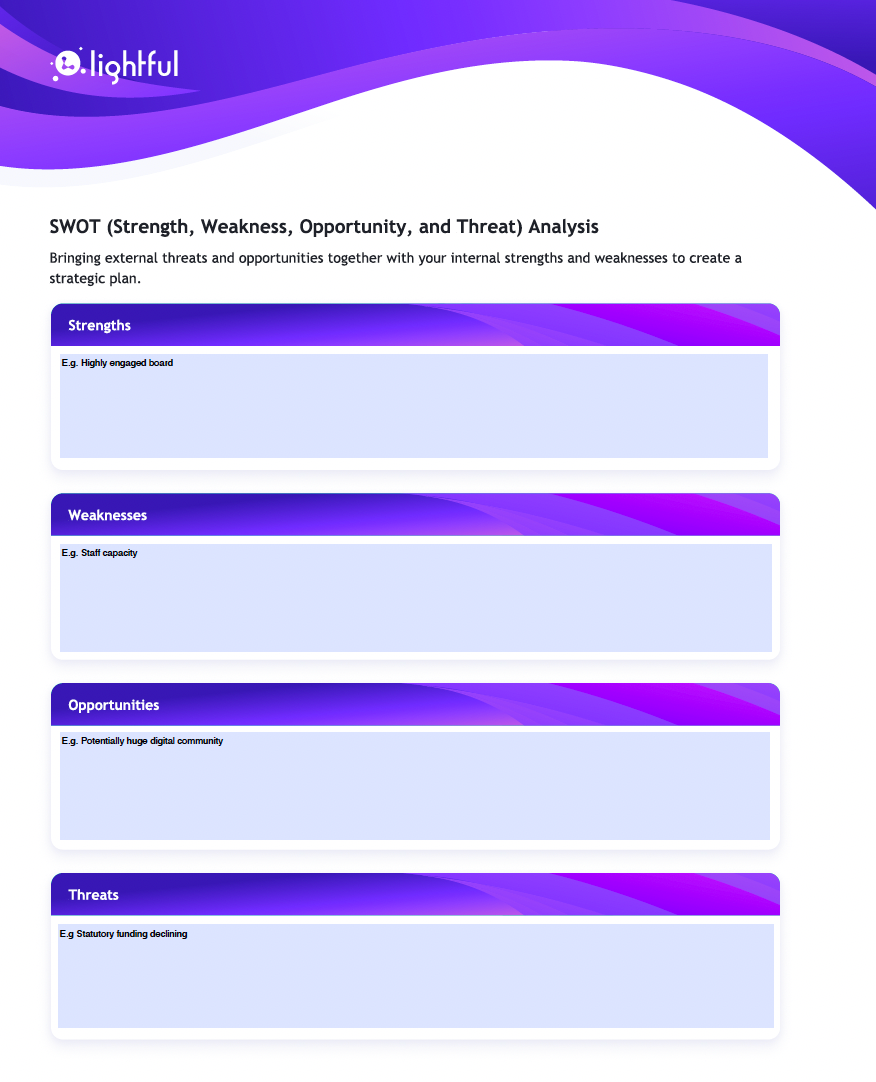
Download Lightful’s free Digital Canvas here
Calculate the effort and impact of all digital tactics
The next step for nonprofits is to review specific channels or tactics to confirm whether they still help them meet their objectives.
The Impact/Effort matrix is a decision-making tool that can help an organisation map out all the opportunities based on the available resources and skills.
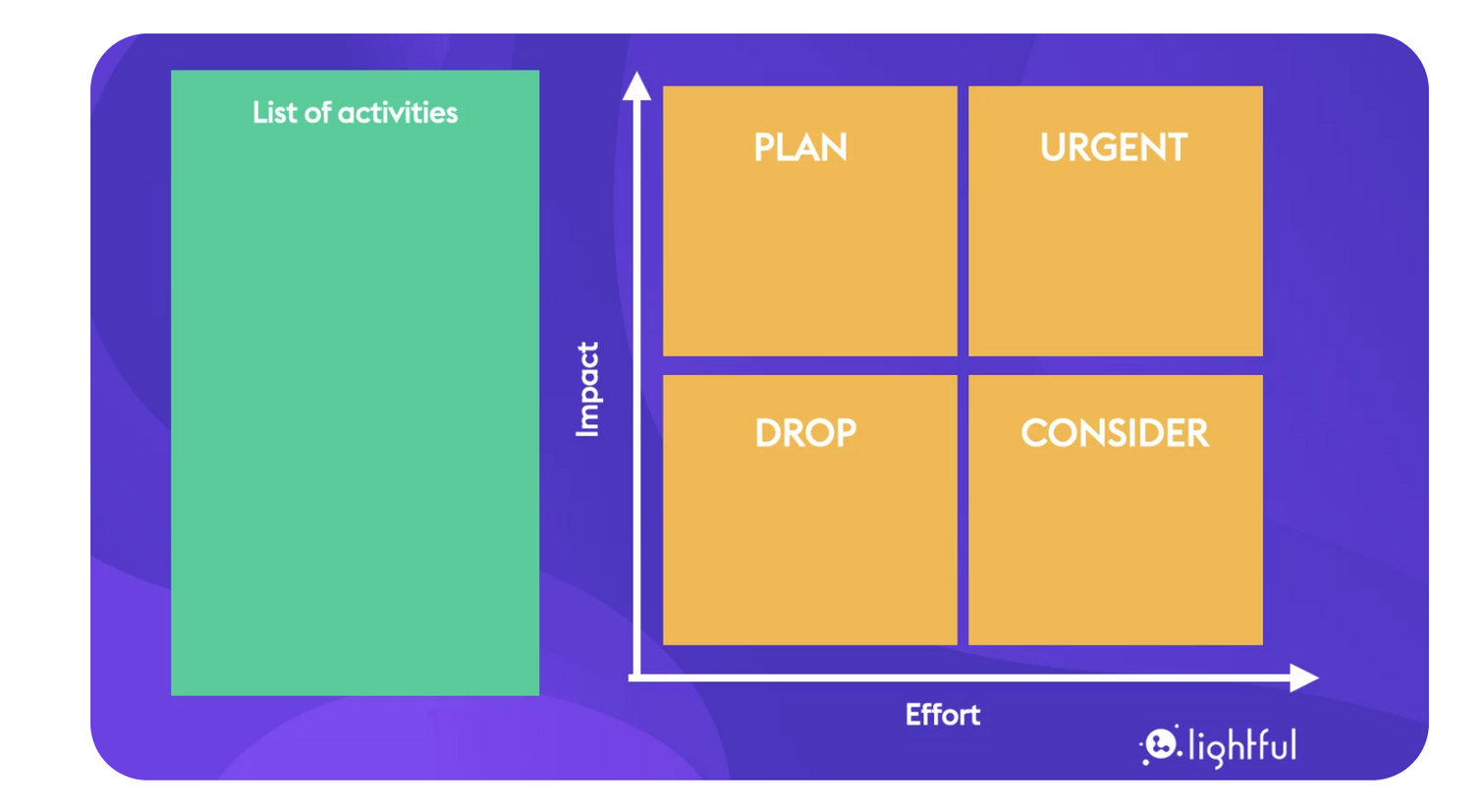
For example, an organisation may want to create a TikTok campaign to reach a younger audience. However, they don’t have a TikTok presence yet and they’d need to research the best practices to get the team up-to-date with the channel.
When adding the activity to the Impact/Effort matrix, the effort may end up beating the impact for the organisation.
A visual overview of all the key areas of focus can make the prioritisation easier – whether it’s about specific activities or channels to use.
What should a nonprofit digital strategy include?
A digital strategy is a living document that a team can update at any time. Every organisation has different digital needs and a digital strategy following a fixed framework can help them identify the best digital tactics for their individual organisation. Every digital strategy should include the following sections:
Audience
The digital strategy should define an organisation’s target audiences. Every channel can work to target a different audience and that’s why it’s important for nonprofits to map out all their audiences and how they are going to speak to them.
When thinking of target audiences, there is also the option to include the internal audiences that engage with an organisation’s digital channels.
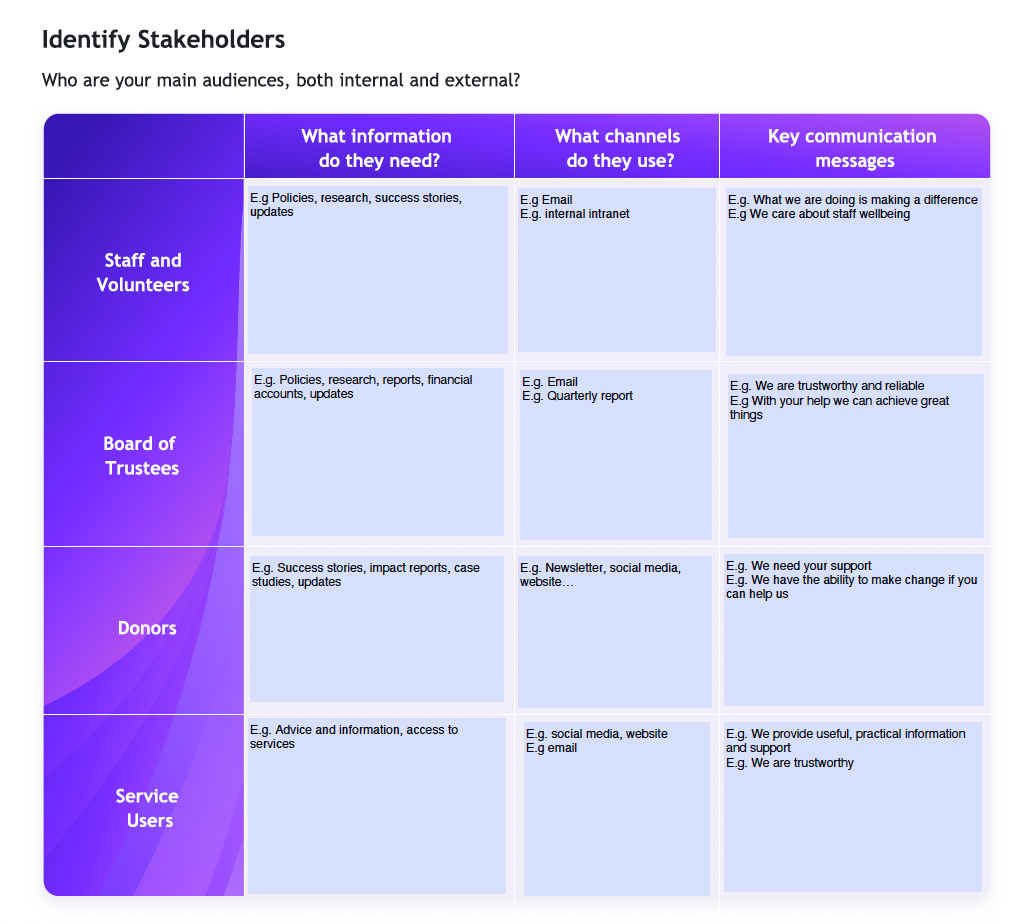
Download Lightful’s free Digital Canvas here
A review of the existing audiences and the channel demographics can lead to interesting insights that can strengthen an organisation’s digital presence.
For example, a closer look at Facebook analytics can help a nonprofit find out that their main audience is aged 40-55 and they tend to engage more with video content. This can be useful information when planning the content ahead to ensure that they deliver the right content for the right audience.
Objectives
An important reason for nonprofits to have a digital strategy is to set clear objectives for their online presence.
All the objectives should be SMART and easy to define. The digital objectives can be split into different channels, such as social media, email, or website. This allows nonprofits to make their goals specific and measurable while adapting their tactics for different channels.
For example, fundraising might be crucial for an organisation’s survival, but they can still set a SMART goal to tell 5 stories of their beneficiaries as part of their next campaigns.
By focusing on storytelling, they can increase their online engagement and be more appealing to prospective donors.
When it comes to SMART objectives, nonprofits should strike the balance of bring to ambitious and realistic. All goals should have a set timeframe to make them achievable and easy to measure.
Channels and Content
It’s useful for an organisation to list all the digital channels where they are active in their strategy – this makes it easier to perform a digital audit and measure their performance.
We also recommend that nonprofits explain how and why they are using each channel so that it's’ easier for everyone within the team to know the organisation’s digital plan.
A good idea for an organisation is to also mention key important dates and campaigns so that everyone has top-level visibility of the digital content calendar.
Roles and responsibilities
A digital strategy should be a document that has all the important information for an organisation’s online presence. A section on the roles and responsibilities can help everyone who joins the organisation know their key contacts.
It also improves collaboration within the team and sets clear expectations and areas of focus. There is also the option to plan the resources ahead for the busier periods when external support may be needed.
Fundraising objectives
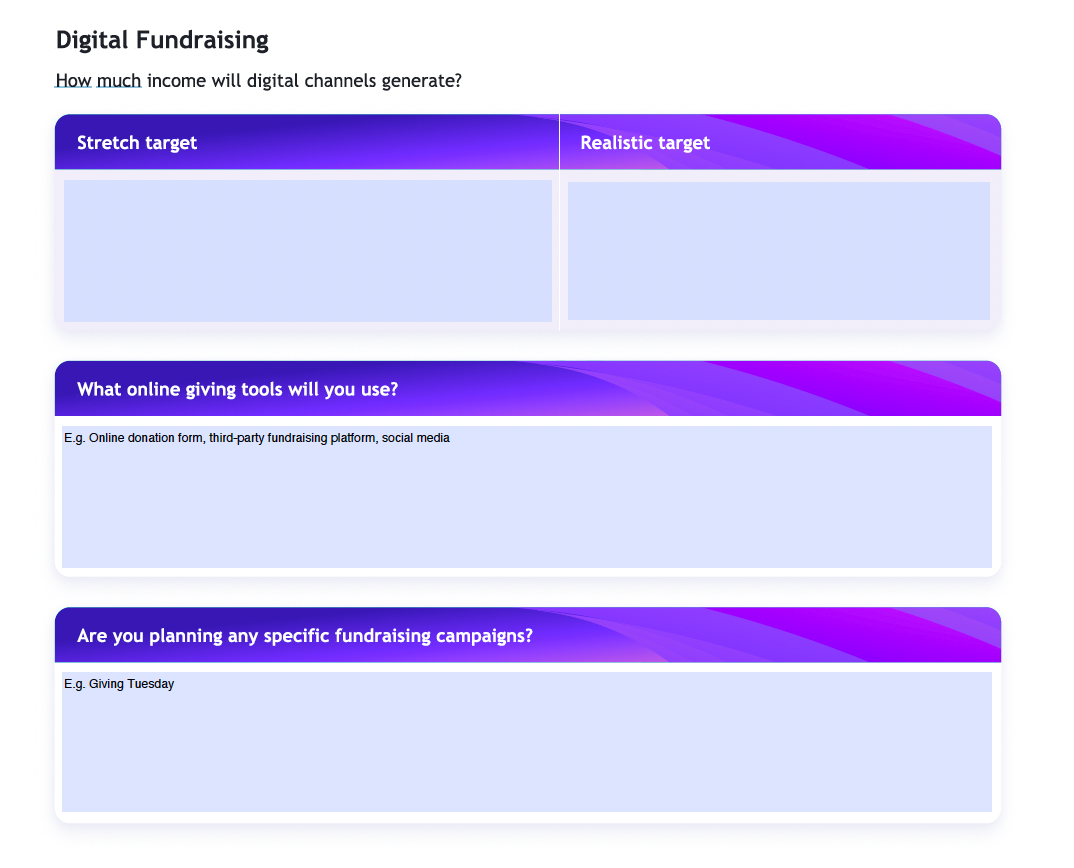
Download Lightful’s free Digital Canvas here
This is a very important section in a nonprofit’s digital strategy and it’s all about linking their digital channels to fundraising goals.
The fundraising objectives mentioned in the digital strategy should focus on the donations coming from digital channels.
The strategy can include both realistic and stretch targets along with any details on the tools and the platforms a team will use to meet their goals.
For example, a small nonprofit might set, as a realistic target for their end-of-year campaign, to raise $3,000 from digital fundraising.
Let’s say a small nonprofit organisation is planning their end-of-year campaign. Their realistic target could be to raise $3,000 from digital fundraising. They could also have a stretch target of raising $5,000 by the end of the year. The idea is to come up with tactics that will help them reach their target and hopefully push them to get closer to the stretch target.
Reporting
The last section in a digital strategy document usually focuses on reporting - this is the section where nonprofits are envisioning what digital success looks like to them and how they want to track it.
They need to be specific with the process of measuring their digital success, from the frequency of measurement to the metrics they will track.
This section doesn’t have to be too detailed, but it’s still important for an organisation to keep it simple and easy to access for everyone.
For example, an organisation might include key metrics to measure their performance once a month so that they stay consistent with the reports they create for the organisation.
Lightful’s Digital Strategy Canvas
We have created a Digital Strategy Canvas to help nonprofit organisations create an actionable digital plan.
“I am excited to start the canvas with our team. It is important to have a common understanding of what tools we need to use in order to have an efficient digital strategy and the Canvas is perfect for that.” - Ecosystems Work for Essential Benefits, Inc. (EcoWEB)
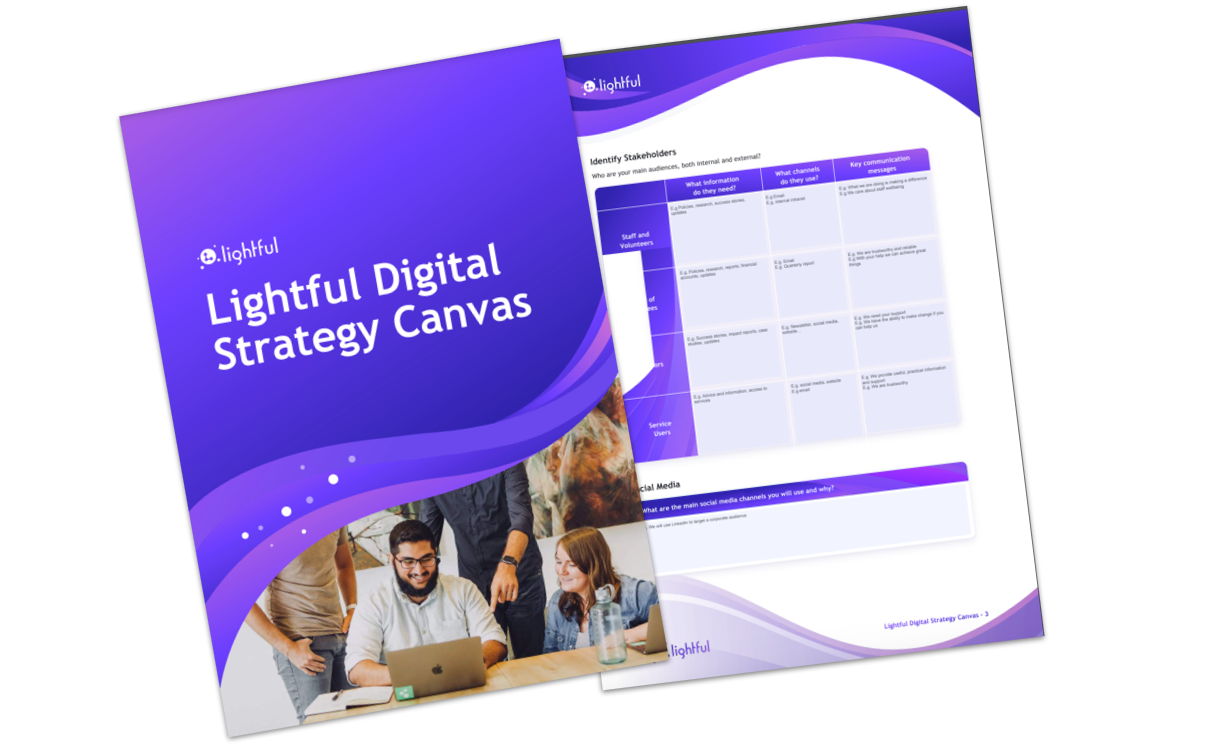
Download Lightful’s free Digital Canvas here
Latest articles

Over the past year, Lightful and the International Confederation of Midwives (ICM) have supported Midwives Associations across Africa, South Asia and the Eastern Mediterranean to build their digital confidence through our BRIDGE programme. These organisations were starting from very different places, but all shared the same goal: to use digital tools to strengthen their voice, raise their visibility and advocate for better outcomes for women and babies.
Related posts
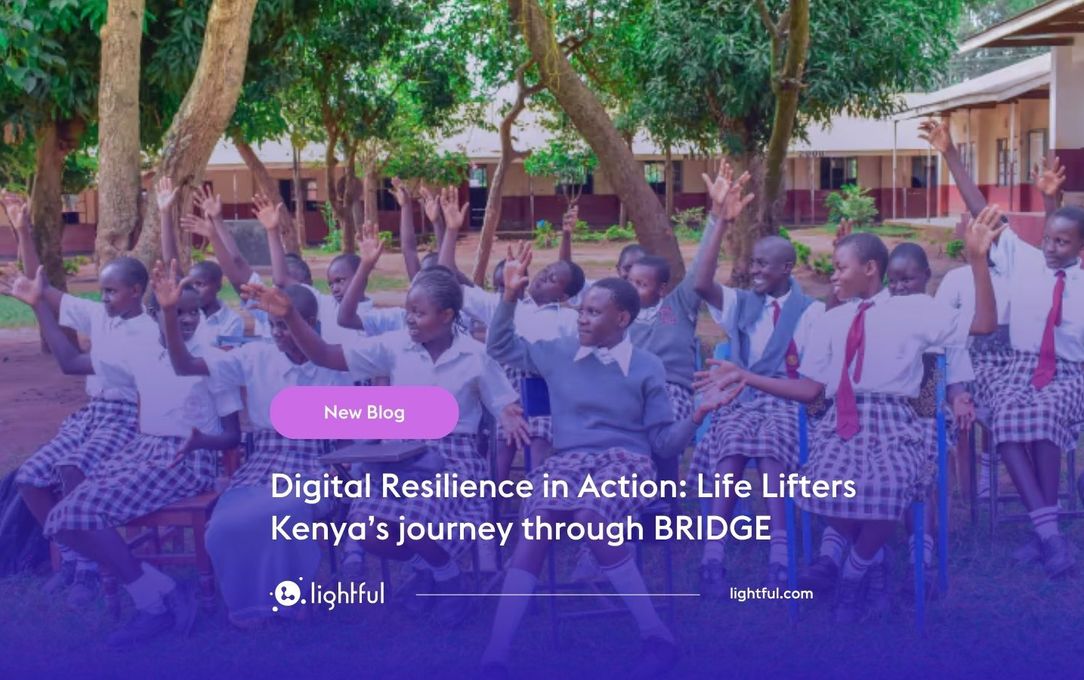
In today’s rapidly evolving digital landscape, the ability to engage online is a necessity. For nonprofits, especially those working in underserved regions or tackling complex social issues, digital tools can be the bridge between intention and impact. Whether it’s reaching new donors, advocating for policy change, or delivering services, digital capacity enables organisations to scale their mission and deepen their impact. Yet many grassroots organisations remain digitally under-resourced. That’s why Lightful created the BRIDGE programme - Building Resilience in Digital Growth and Engagement - to empower nonprofits with the skills, confidence, and strategies to thrive in the digital age and build lasting change.

Advancing digital maturity: what Lightful has learned from supporting 3,500 charities globally
See who we help
Contact us
Want to learn more?
Email Jonathan and start a conversation







